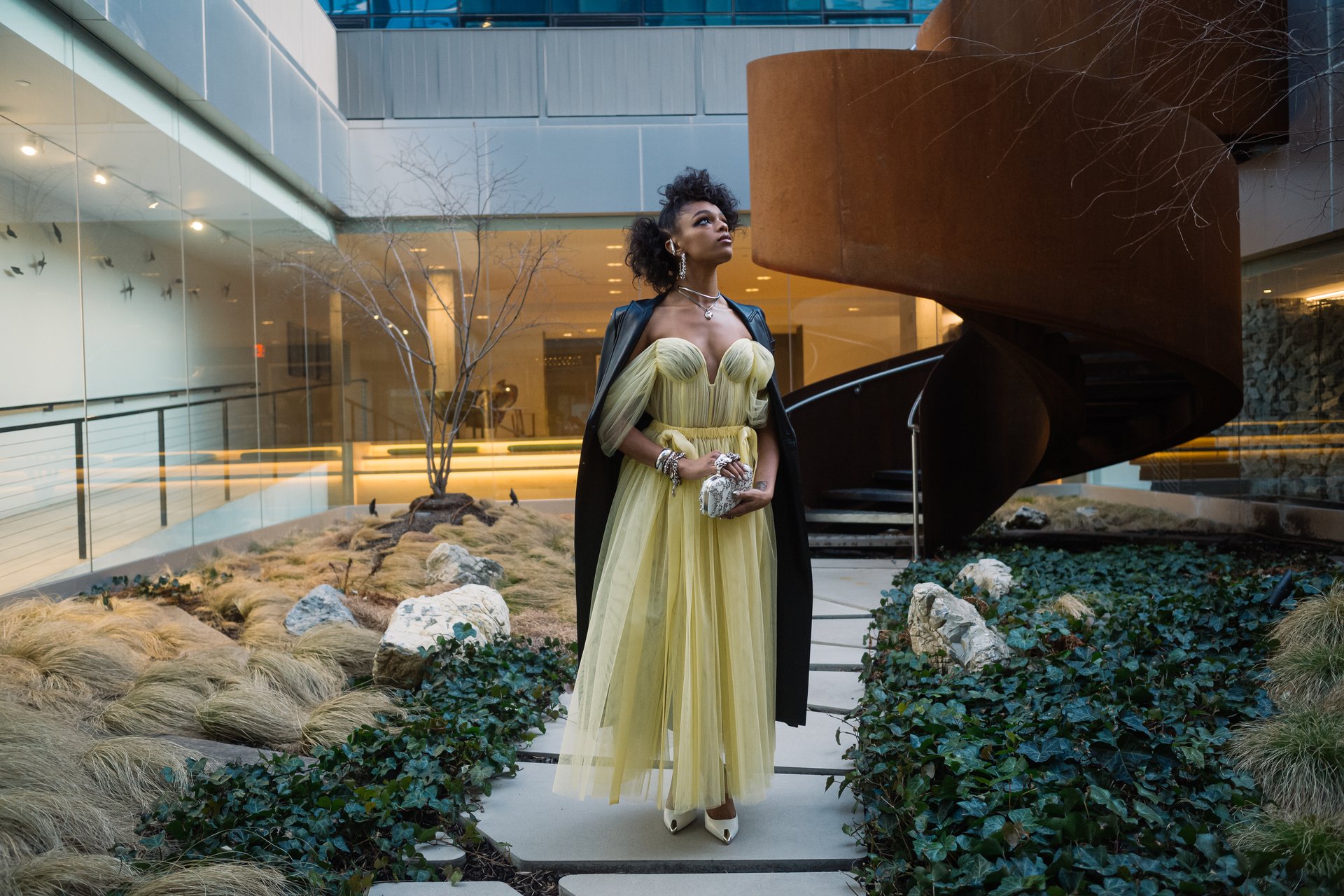The State of DEI in Fashion Today
March 17, 2022
Joseph Maglieri
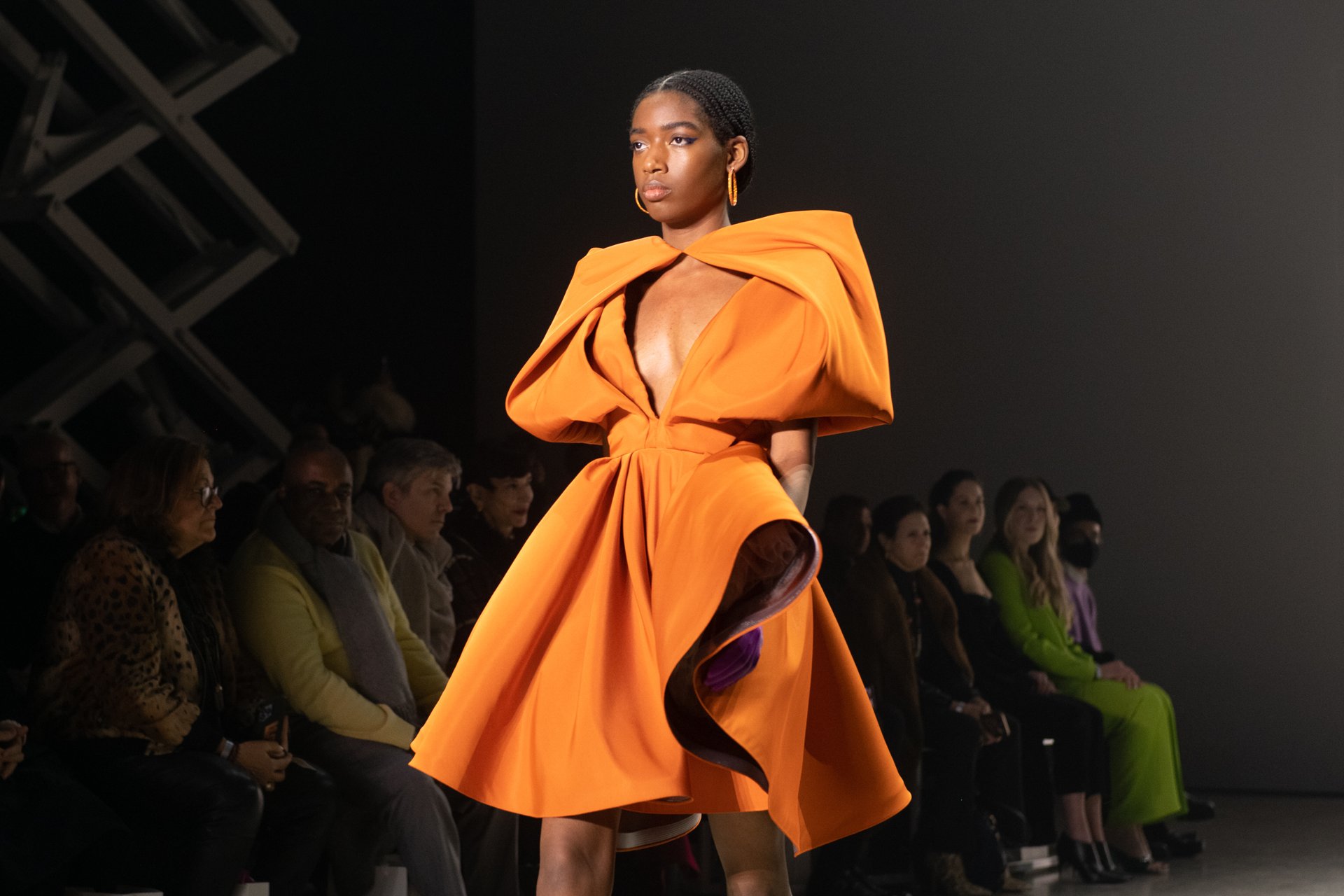

Over the last few years, the terms “diversity,” “equity,” and “inclusion” (known as “DEI”) have moved from the margins and sidelines of organizational efforts to center stage. Through the creation and appointments of a slew of DEI leadership roles and public pledges and commitments, many businesses invested in their DEI strategy. In the court of public opinion, efforts set forth often oscillate between either marketing performance and systemic change, and it can be difficult to determine which are authentic and also effective. For some – especially those in largely underrepresented and underprivileged communities and related intersections – the discourse has been going on long before they became one of fashion’s most discussed topic and is seen as a long-overdue reckoning. For most, it’s been a period of simultaneous learning and unlearning amid the advent of what’s been popularized as a “culture of accountability.”
The fashion industry, where culture and commerce collide head on, has been tasked with understanding its responsibility. The challenge is set forth demanding our industry to take meaningful action and scale practices grounded in fostering access and achieving equity in a highly matrixed global industry.
The Council of Fashion Designers of America (CFDA) and PVH Corp. launched the State of Diversity, Equity & Inclusion in Fashion report in February 2021, which included analysis drawn on a McKinsey & Company survey. CFDA and PVH sought to emphasize the experiences of Black employees and industry voices, and other underrepresented, underserved, and underprivileged communities across all industry sectors and hierarchies with accompanying themes such as allyship and intersectionality explored. The study served as evidence of our industry’s issues, but also as proof that steps to progress and equity are achievable at every level, no matter the individual or organizational resources.
For the one-year anniversary of the project, we organized a candid conversation between two leading figures at the helm of this work – CFDA president CaSandra Diggs and PVH chief diversity officer and Senior Vice President, Global Talent Acquisition, Lance LaVergne – to discuss the changing state of diversity, equity, and inclusion in fashion.
Lance: The great thing about the report is that it identified and codified what people had been saying or feeling about aspects of diversity in the fashion industry. It brought some clarity and backed up those feelings with real hard data and insights that we were able to collect. The report outlines a number of actions that individuals, organizations, and companies can take to address the issues that were highlighted in the report. The fact that there is real concrete evidence and actionable steps that we can take to address those issues, to me, has moved us forward in the conversation.
CaSandra: I consider it a slow factory. There is progress. It’s not as quick as we would have liked, but the report actually helped us to define and clarify. We knew some of the challenges exist but weren’t able to name them. It helped us put a language around some of those challenges. It created a blueprint for individuals and companies and institutions, a roadmap to follow and adopt. I get a lot of feedback and outreach from people who have tapped into the report. I get graduate students who are studying DEI and fashion ask a lot of questions about our findings.
As conversations centered on DEI evolve and accelerate, a follow-up question always remains: “So, what’s being done?”. With scores of commitments, pledges, and grassroots organizations (several in partnership with or directly supported by CFDA and PVH respectively) at the center of this work, CaSandra and Lance share some insights on the work being done on the ground floor and at the top of both companies.
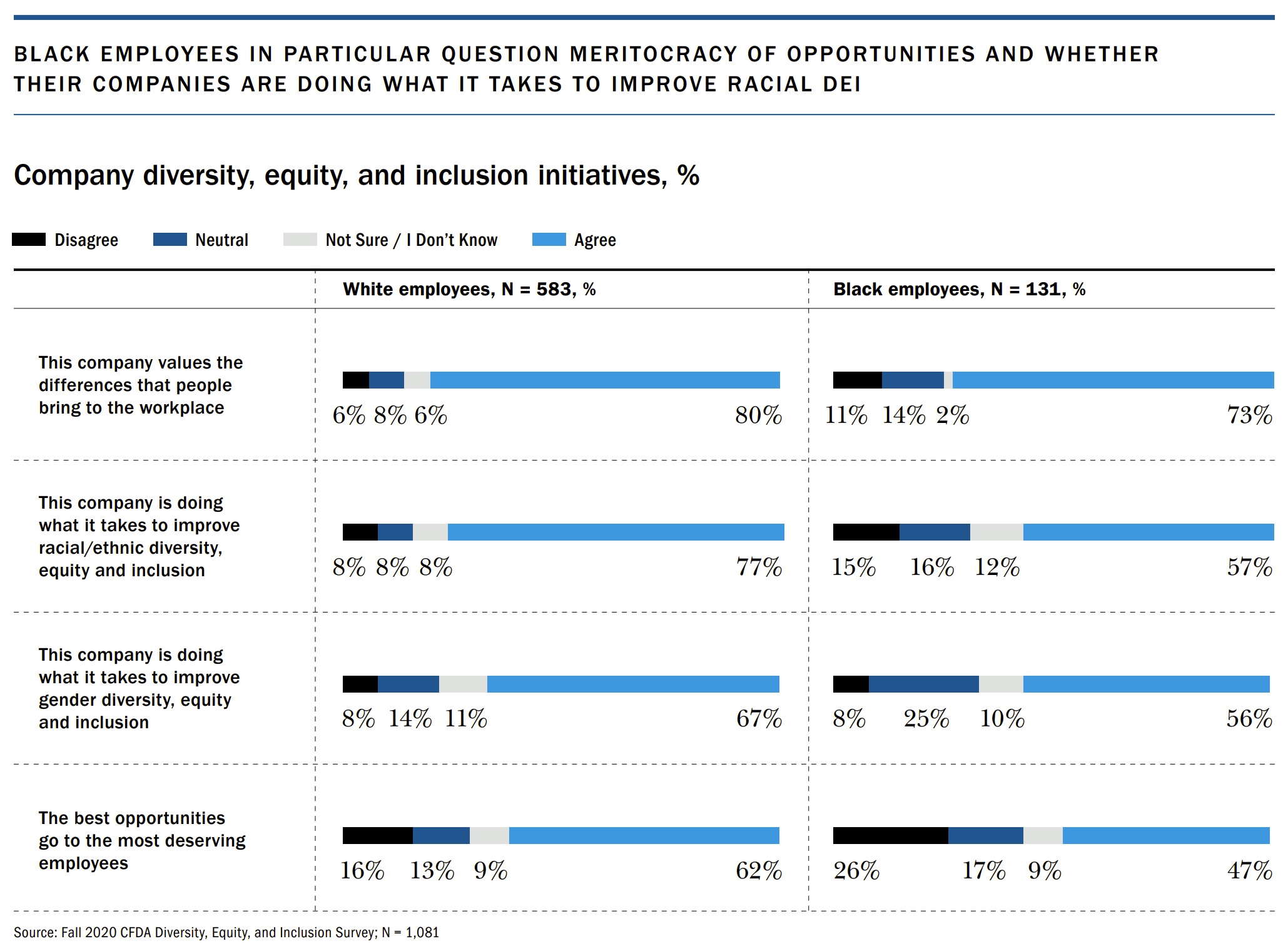
Lance: I’m really pleased with the progress we’ve been able to make here at PVH, much of which has been informed, if not driven by, the outcomes of the report. An outgrowth or outcome is that PVH announced and launched nine specific commitments around inclusion and diversity which align with many of the opportunities revealed in the report.
We’ve set representation commitments to improve the profile of the organization based on gender globally and racial and ethnic diversity here in the U.S. We’re creating a mentorship vehicle for women and underrepresented groups. We’ve launched a supplier diversity program. We’re building in accountability in terms of managerial effectiveness through our performance management process. We are adjusting how we recruit, particularly at the senior levels, to ensure that we have diversity in our candidate slates to bring more diversity to the top of our organization.
But the most exciting, and most relevant to the work in the study, is that we made a commitment to invest $10 million over the next four years to increase awareness and access to opportunities in fashion for underserved communities. The goal is to identify partnerships and programs that we can engage in and fund that promote fashion to those groups who are just not currently represented in the field. That’s the one about which I am most excited.
CaSandra: For CFDA, there’s been both internal and external facing work here that we’ve been doing. We’ve also started to hold ourselves more accountable. We’ve started looking at how we message in terms of our diversity, equity, and inclusion efforts. We really looked at how we recruit. It’s not just about the recruitment and hiring, but when they’re here, how we’re developing them, and creating opportunity to extend to leadership positions in the future and get the support around professional development. We’ve also started training. It’s important that everyone at an organization becomes versed in diversity, equity, and inclusion, and how to be a more inclusive whether that’s through leadership or individual efforts. Our external commitment to the industry as a leading institution has been strong launching our CFDA IMPACT program of which PVH is a partner.
The CFDA and PVH identified six key areas of opportunity: awareness, access, promotion, advocacy, compensation and belonging in the State of DEI research. Each of these areas were thoroughly explored and supported by data insights, personal narratives, and steps for intervention. Specifically, talent acquisition and retention through the lens of DEI was a major focus of the State of DEI work. The conversation breaks down some of these specific areas while addressing roadblocks and challenges faced in the DEI landscape as they relate to areas of opportunity.
CaSandra: With the six levers of change, the industry has immediately embraced the ideas around awareness. Over the past year, I’ve seen companies in all segments of the industry making talent of color more visible on their platforms, writing stories about that talent and having conversations with talent of color, embracing the uniqueness of that talent and really giving them voice within this larger conversation. I think that’s also the easiest to tap into.
Lance: I would agree with that. The other thing is that those efforts are the most externally facing. Some of the other areas that were identified in the report relate to the things that are happening within an organization, and for a host of reasons, there’s not as much visibility into those. You have to trust or take on faith that companies are activating and doing things to address the issues of compensation and belonging. From time to time, you’ll see a story or external representation of that, but it’s a little harder to see what progress is being made on those fronts because they are internally focused.
CaSandra: I think you tapped into something that’s really important when [you] referenced the externality of access versus the internality of some of the other levers. When it comes to access and promotion, there are other forces that impact them. The pandemic had an impact. Companies are still trying to rebound from the financial impact of COVID-19. When it comes to access there’s also a geographical mismatch with opportunity.
Sometimes in fashion, the opportunities are really centered in the metropolitan areas and there’s a lot of talent in other regional areas. Focusing on hybrid and remote work could serve as a solve for that challenge. When it comes to compensation and belonging, we’re still battling bias. Unconscious bias training and anti-racism training and addressing systemic discrimination in the industry has just really started. There’s an entrenchment in this traditional way of doing things in business. We haven’t yet let in enough voices, newer voices with different mindsets and views. If we could do that, we would address some of these other areas of promotion, advocacy, compensation, and belonging.
Lance: We’re trying to achieve having broader representation of currently underrepresented groups across all levels of the fashion hierarchy. There are a few ways to address representation, and talent acquisition and retention are two of the most significant levers that we have at our disposal – who you hire and who you keep.
I’ll use PVH as a case study here: we have very strong gender diversity and racial or ethnic diversity at the more junior and entry-levels of our organization, but like most organizations, that diversity starts to get smaller and less prominent as you go up the ranks. As a result, when we are focused on talent acquisition, we’re really trying to identify those levels of the organization where we have the greatest opportunities to improve representation. For us, that’s at the director level and above, which is where our diverse candidate slate requirement comes into play. That’s to ensure that at least half of the people we’re interviewing for roles at that level represent a dimension of difference.
We’re also focusing on adding resources to help us better understand talent landscape and to build talent pools and talent communities. That way, when opportunities do arise, we’re not starting from scratch. We already have a sense of who’s out there and who we’d like to engage in terms of the opportunities we have here at PVH. I know other fashion companies have also implemented similar efforts to try and expand the pool of people they’re considering for opportunities in their organizations. But you must also keep the people you have as well, if you want to improve representation across the board.
Being where we want to be means that we have to take account of where we are.
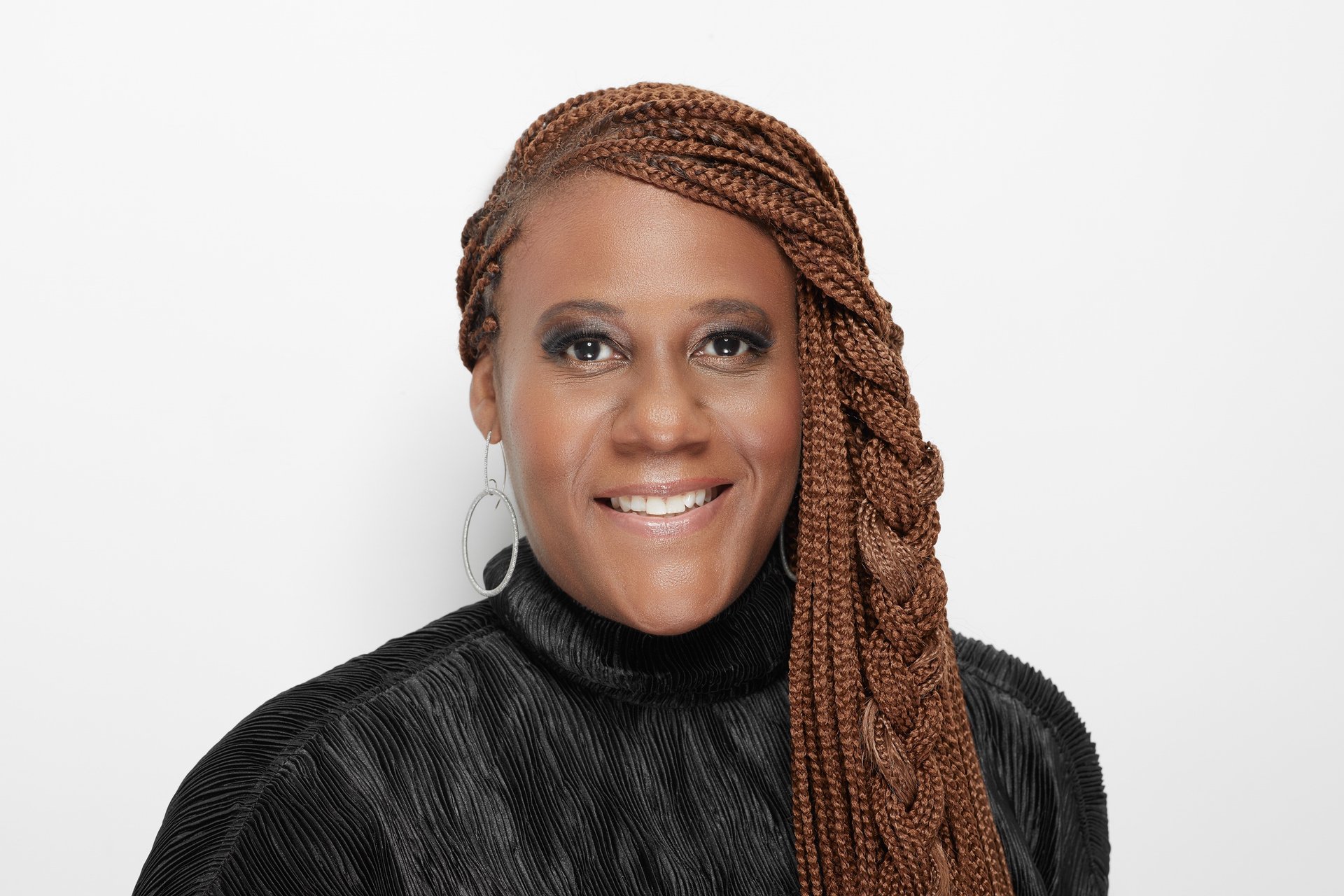
CaSandra Diggs
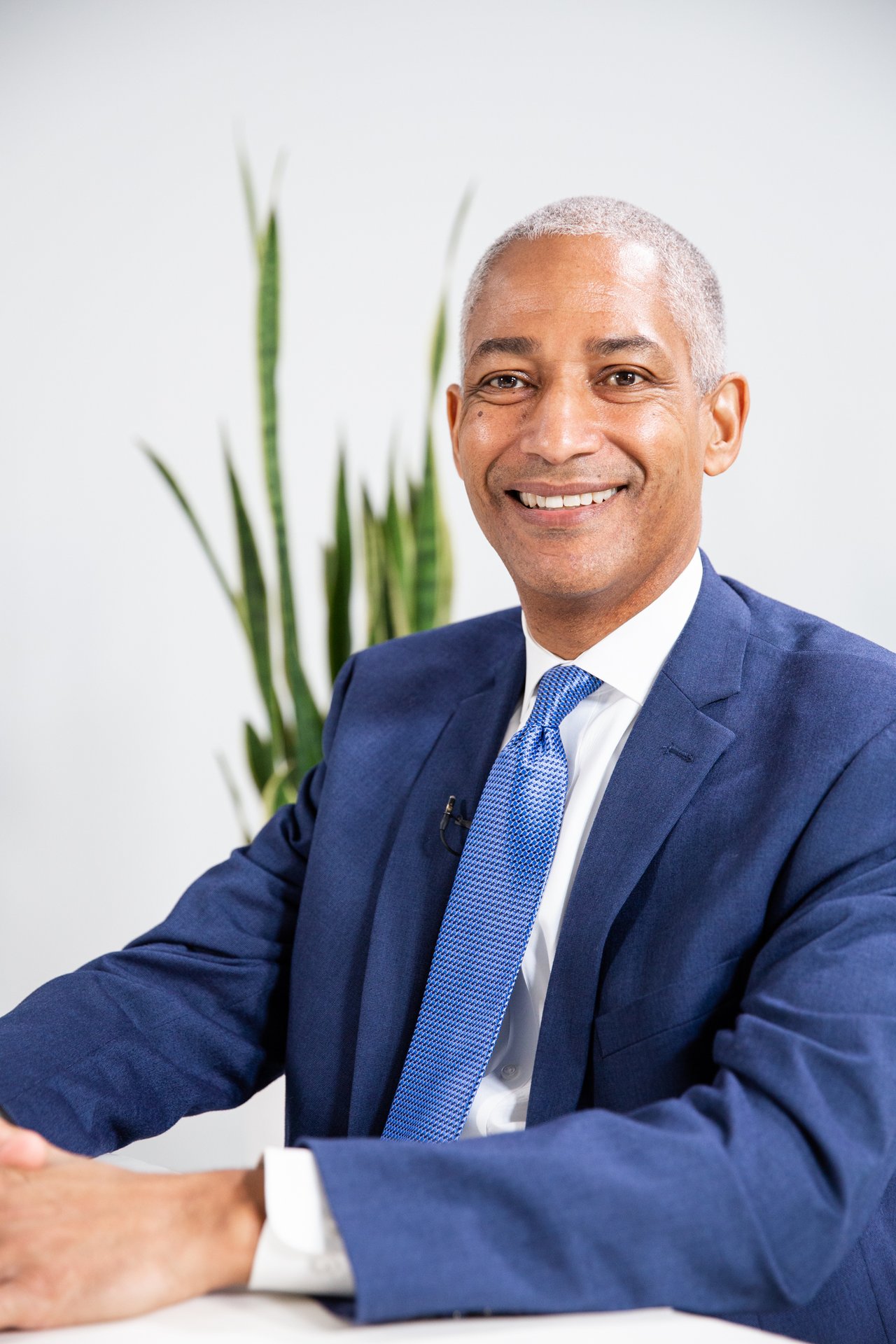
Lance LaVergne
A key focus of the study, and recent efforts across the global industry, center on mentorship and sponsorship. The State of DEI study defined a mentor as someone who “is a trusted counselor who serves as a sounding board and provides advice, guidance, and support.” Similarly yet differently, a sponsor was framed as “a senior leader who is invested in the success of a junior colleague or peer through committed support of their career, including actively championing their progress and creating opportunities.” As reported in the State of DEI, “fewer employees of color reported having at least one person who creates or advocates for new opportunities for them (28% vs. 33% for white employees) and having a senior person advocate for them regularly (33% vs. 44% white employees).”
The 2021 research also discovered “only 36% of employees of color reported having a senior person to go to for advice during a challenging time, compared to 47% of white employees. This is particularly crucial given the role of networking in the fashion industry and the prevalence of nepotism and internal politics. Interviewees also pointed to the importance of mentorship, especially for those whose parents did not, or do not, hold white-collar jobs.”
Appreciating the nuances between the concepts of mentorship and sponsorship is important and discussed further.
CaSandra: As someone who has been a mentor and someone who’s been mentored over the course of my career, [mentorship] was often looked at as this hierarchal structure. I don’t think it’s that anymore – mentorship is a real exchange of knowledge and expertise, and that can come from any level. In 2020 and 2021, it became about reverse mentoring. As we start to engage with DEI and realize that people from underprivileged and underserved communities can serve as mentors to leadership to help us be more inclusive leaders in learning about different cultures and different experiences.
Mentorship is much more about an equal sharing of information and experience, and building a relationship where sponsorship has a similar effort. It’s somewhat the next phase of mentorship. It’s being integrated into performance management tools. And it’s being looked at whether they’re committed and effective as leaders. It serves to benefit both sides.
Lance: Another interesting thing about this construct is that people sometimes have a fairly narrow view of how mentorship can happen – and it’s usually within the context of their own organizations. But through the report and some of the other work the CFDA is doing, we’ve been able to expand the view of mentorship and engage people across organizational lines to create really different and interesting pairings that can support the people who can most benefit from these relationships
Crossing organizational lines speaks to the broader companies-wide effort in enacting DEI in our workplaces. Both CaSandra and Lance speak to the criticality of this as not only an exercise in support-share, but also as a means to unifying an oft-disjointed industry as it relates to standardization and the efficacy of DEI practices. How can fashion continue to work across not only other fashion companies but other industries to make advancements?
Research from the State of DEI study indicates particular biases and challenges unique to the fashion industry: notions of “taste” and aestheticism as qualifiers to access typically linked to socio-economic status, connections and an over-reliance on personal referrals, geographical barriers to participating in the industry if you’re not located in a “fashion capital” like New York City, the untapped yet substantial buying power of underrepresented customer bases, and of course, cultural appropriation. Fashion can learn from other industries on how to approach DEI as both a concept and practice, while appreciating its own unique standing as a powerhouse industry.
CaSandra: I see this as twofold in terms of our industry. Embracing what we would call STEAM – science, technology, engineering, arts, and mathematics – can be a great way to work across industries. Pulling in talent from other industries into our industry to get an alternative expertise on our business challenges. Diversifying the supply chain and who we engage in terms of who’s manufacturing, producing, and providing service to our industry can be a good way to work across industry lines.
Lance: It’s also important for us to be open as an industry to consider the practices other sectors have employed to try and drive greater DEI in their businesses. I would argue that fashion got off to a slower start than other industries. CPG (consumer packaged goods) companies have been on this journey for quite some time. Even the financial services sector has been at this for a while. So, to the extent that we can leverage and learn from the work that they have undertaken, and avoid some of their missteps and pitfalls, that will help to accelerate what we’re trying to do in the fashion industry.
Exploring like-minded yet different industries as sources of support is top of mind as is the expansion of less-discussed DEI tracks. As the new year finds its footing, CaSandra and Lance speak on emerging and under-resourced areas of DEI their respective organizations are working to highlight and grow support in nurturing. In tandem, as efforts grow so does awareness and subsequent expectations of transparency.
CaSandra: For the CFDA and other organizations we’ve been engaging with, mental health and wellness, as it relates to diversity, equity and inclusion, has been a focus for those who are in the trenches, doing the work, and for those who work in these organizations that might face microaggressions and making sure that those people have an outlet to get care. It’s challenging for those who are in underrepresented groups to come into cultures where they may not feel they belong. The terms “equity and belonging,” or “empathy and belonging” have become a real theme. Before, it was just “diversity and inclusion.” Now, it’s really about defining the advantages and barriers people encounter.
Lance: I would also add intersectionality, which is a fancy way of saying that are not defined by a single attribute. We are broadening the view beyond a single dimension of diversity to really understanding the complexities of who we are as individuals and how that comes together to influence and impact a person’s experiences.
CaSandra: You make a great point there. One of the other points it’s important to tap into is the focus on accountability and commitment has amplified since 2020. A lot of companies that made commitments made them publicly. The consumer is even more focused and paying more attention to companies, and people are starting to ask for analysis and reporting on those commitments they promised.
The ”state” of DEI is intentionally used as its condition in our industry ebbs and flows. Its in a constant state of evolution as company and industry changes change, change back, and change again. The conversation between CaSandra and Lance zooms out and asks both to look ahead. In the spirit of anniversary and where this work has been, it asks what is next. From inspiration to tactical goals, both chart a path forward and expound on where we go from here.
Lance: From a PVH perspective, looking ahead a year from now, we certainly hope that we will have improved representation in the areas where we’ve identified and that the different communities within PVH feel even more strongly that PVH is a place where they can be their full selves and have the same opportunity for advancement as any other community within the organization.
CaSandra: The fact that we’re here today to really talk about the report and talk about what has come out of that is a good way to remind people that we must always go back and measure and identify and update our goals and our objectives. And sometimes those will change and it’s okay to pivot as needed. Being where we want to be means that we have to take account of where we are, so I’m glad that we actually did that through this report and through our collaboration.
For the full 2021 State of Diversity, Equity & Inclusion in Fashion report, click here.
CFDA would like to extend a special thank you to the McKinsey & Company team for their hard work and dedication to this study.
BIBHU MOHAPATRA RUNWAY PHOTO BY BFA.COM
